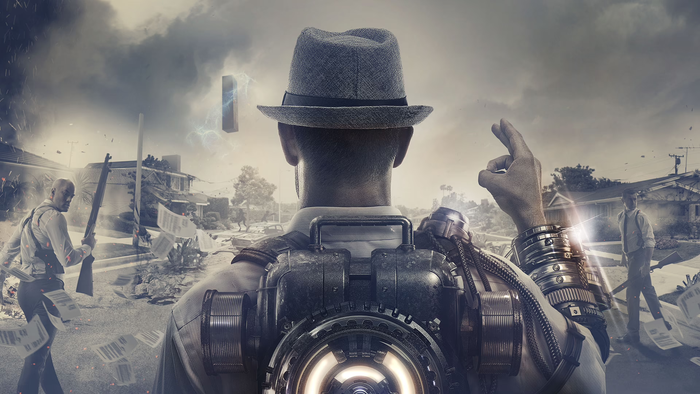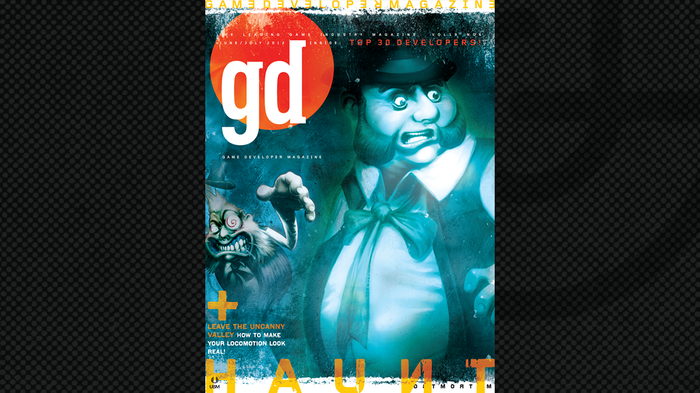The Paradox of "Big" and "Small": Factors That Affect Players' Perception of Map Size in Games
By analyzing various factors that affect players' perception of map size, this blog will help you understand the reason of this contradictory cognition and how, as a game designer, to seek balance in this situation.

When analyzing the public opinions of a game, developers often find that there may be significant conflicting perceptions among players regarding the size of in-game maps. While playing in the same map, some players have feedback saying that the map is too large, while others will say it's too small. Why does this occur? By analyzing various factors that affect players' perception of map size, this blog will help you understand the reason of this contradictory cognition and how, as a game designer, to seek balance in this situation.
1. What factors make players feel that the maps in the game are too big?
“The map of this game is so large. Every time I want to go to a target location, I have to run for a long time."
"The map is too big. It feels like I need to walk a long way to find useful resources."
"The map is a bit too big. I feel like I'm always rushing around in circles. What's even worse is that I feel like I'm running really slowly, so I'm spending my limited playing time just running around.”
The above player feedback comes from a survival game that we recently surveyed. It is clear that many players have come to a unanimous conclusion regarding the issue of map size - the in-game map is too large, which to some extent affects their gaming experience. However, if dig deeper into the player feedback, we can discover that the reasons behind why players feel the game map is too large differ significantly. For example:
“This game map is so big, every time I want to go to a target location, I have to run for a long time.”
This is one of the important factors that affect players' perception of map size: the layout of destinations within the map. For example, when playing battle royale games, we tend to study the locations of various target spots within the game map before choosing a landing point, while at the same time evaluating the resources that may exist around each location. If, in two maps of the same size, the distance between target locations on one map are scattered apart, players will spend more time traveling and searching for target locations, which tend to give them the feeling that the map is too big and they cannot reach their destination no matter how far they run.
This feeling of the game map being too big due to longer travel times is particularly evident in games with significant time constraints. For example, in a battle royale game, players need to run into the ring within a certain time. If the shrinking speed is too fast and the target point is too far away, some players will naturally feel that the map is too big and they cannot reach proper positions.

In addition to the distribution of the target spots within the map, the corresponding distribution of resources will also greatly affect the player's perception of map size. For example, in survival games where players need to collect resources, craft tools, and improve their survival and combat abilities, if the distribution of resource locations are too scattered, it will also make players feel exhausted and busy in the game running around, as mentioned in the feedback from players above.
“The map is too big and it feels like we have to go a long way to find useful resources.”
The map itself may not be large, but in the life-or-death atmosphere created by the game, if the distribution of resources is too scattered, making it difficult to find. This can also lead players to shift their focus from the difficult experiences they encounter to the size design of the map itself.

In addition to the distribution of the destination and resource points, the design of character movement speed in the game also greatly affects players' perception of map size. Especially in some games with no significant map location indicators, players need to continuously play and ultimately "measure the size of the map with their own feet". The differences in spatial perception caused by this movement speed design problem are particularly noticeable. For example, in the feedback from the player below, compared to the size of the game map itself, movement speed may be the important factor that affects their gaming experience:
“The map is a bit too big. I feel like I'm always rushing and going around in circles. What's even worse is that I feel like I'm running really slowly, and the limited time I have for playing is all spent on rushing around.”
In order to reduce the impact of in-game movement speed on players' perception of spatial size to a certain extent, some games have added mechanisms to increase movement speed in their level design. For example, in Naraka: Bladepoint, an innovative flying hook mechanism has been designed to help players quickly overcome the disadvantages of geographical location and increase the pleasure of melee combat and parkouring in the game.

2. What factors make players feel that the maps in the game are too small?
Above are several factors that we had concluded from our research projects that may lead players to perceive game maps as too large. On the other hand, what are the factors that may make players feel that the in-game map is too small? We believe the following situations are possible.
Firstly, the sense of space congestion caused by too many obstacles could make players feel that the in-game map is too small. For example, in a study on player experience of Rainbow Six Siege, we found that a considerable number of players who have played other FPS games may feel that some scenes in this game are small, such as:
“The space where quality combat can take place is too small, and it often feels crowded.”
“The indoor structure has limited space and it is not easy to cooperate when attack and defense.”
Careful study of player feedback reveals that the problem that players complain about is not that the overall map of the battle is too small, but that the combat area within the scene is small and the combat distance is too close. This may limit the space for players to move and retreat when facing direct attacks. One prominent design of Rainbow Six Siege is that there are many scene elements (such as obstacles, furniture, settings) that can affect a battle, which may cause some players who are accustomed to long-range combat in open spaces to have problems at the beginning of the game.

In addition, the number of target locations and resource points that can be explored on the map is limited and concentrated, or character’s movement speed is too fast, which may make some players who have a desire to explore the map feel that the in-game map is small and lacks challenge.
3. How to seek balance in the face of the perception paradox of 'too big' or 'too small' map
Whether as a game designer or a user researcher, how can you seek balance when encounter contradictions in game map size perception, such as maps being too large or too small? Before implementing any design modifications and optimizations, you can consider the following.
First, what kind of player has raised the specific perception problems of space or map size? Ask this question first.
From the above analysis, we can see that a player's game experience and preferences may significantly influence their spatial perception results. For example, players with a strong desire for exploration will prefer map size designs that are expansive and can stimulate their desire to run and explore.
Second, it is worth to consider whether players have other deeper game needs apart from providing feedback on whether the map is too big or too small. Instead of focusing solely on the size of the map, we need to dig deeper into the player's underlying game motivations and needs and continuously optimize the game mechanics based on these deeper needs. For example, reducing the time it takes to run on the map, using limited time for exciting positive battles and strategy implementation, or helping players achieve more game progress by letting them quickly collect resources might be useful instead of revising map size directly.
Read more about:
BlogsAbout the Author
You May Also Like









